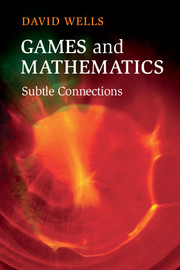Book contents
- Frontmatter
- Contents
- Acknowledgements
- Part I Mathematical Recreations and Abstract Games
- Part II Mathematics: game-like, scientific and perceptual
- 6 Game-like mathematics
- 7 Euclid and the rules of his geometrical game
- 8 New concepts and new objects
- 9 Convergent and divergent series
- 10 Mathematics becomes game-like
- 11 Mathematics as science
- 12 Numbers and sequences
- 13 Computers and mathematics
- 14 Mathematics and the sciences
- 15 Minimum paths: elegant simplicity
- 16 The foundations: perception, imagination, insight
- 17 Structure
- 18 Hidden structure, common structure
- 19 Mathematics and beauty
- 20 Origins: formality in the everyday world
- References
- Index
7 - Euclid and the rules of his geometrical game
Published online by Cambridge University Press: 05 November 2012
- Frontmatter
- Contents
- Acknowledgements
- Part I Mathematical Recreations and Abstract Games
- Part II Mathematics: game-like, scientific and perceptual
- 6 Game-like mathematics
- 7 Euclid and the rules of his geometrical game
- 8 New concepts and new objects
- 9 Convergent and divergent series
- 10 Mathematics becomes game-like
- 11 Mathematics as science
- 12 Numbers and sequences
- 13 Computers and mathematics
- 14 Mathematics and the sciences
- 15 Minimum paths: elegant simplicity
- 16 The foundations: perception, imagination, insight
- 17 Structure
- 18 Hidden structure, common structure
- 19 Mathematics and beauty
- 20 Origins: formality in the everyday world
- References
- Index
Summary
At the age of twelve I experienced a second wonder of a totally different nature: in a little book dealing with Euclidean plane geometry…Here were assertions, as for example the intersection of the three altitudes of a triangle in one point, which – though by no means evident – could nevertheless be proved with such certainty that any doubt appeared to be out of the question.
This lucidity and certainty made an indescribable impression upon me.
Einstein [Schilp 1951: 9]Euclid and his Elements of geometry were considered for more than 2000 years to be the pinnacle and model of mathematical perfection. We now know better but the Elements remain an amazing achievement: so simple and so powerful despite their imperfections.
Euclid started by listing 23 definitions, 5 postulates, and 5 common notions as a foundation for the whole of geometry. Below are some of the definitions and all the postulates. The common notions really do seem ‘common’ and quite obvious, for example that equals added to equals, make equals. The postulates consists of three actions which Euclid assumes can always be carried out, and two assumptions. The first seems natural enough – but Euclid still felt obliged to state it – but the famous 5th postulate is by no means obvious and it was eventually discovered in the nineteenth century that if you deny it and substitute a suitable alternative you can get several perfectly consistent geometries that are non-Euclidean.
- Type
- Chapter
- Information
- Games and MathematicsSubtle Connections, pp. 85 - 94Publisher: Cambridge University PressPrint publication year: 2012



